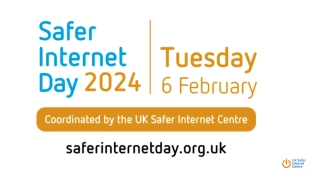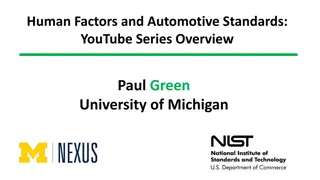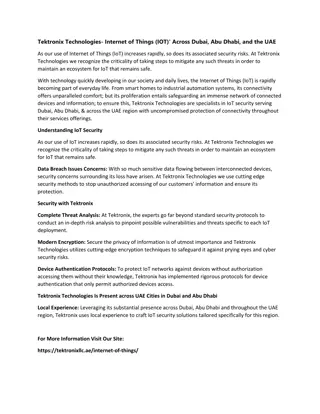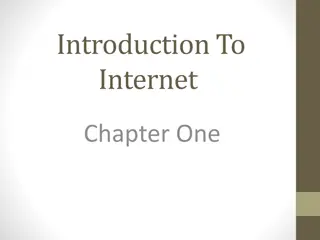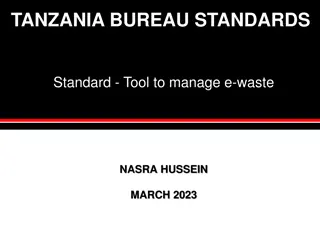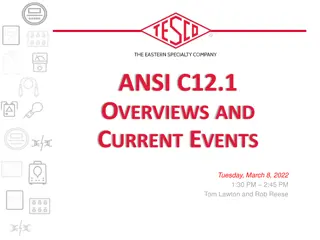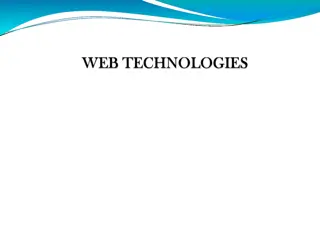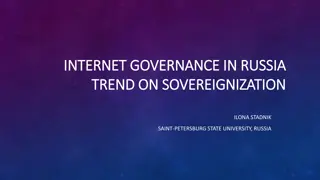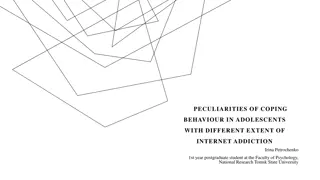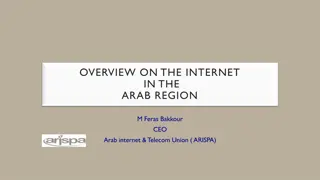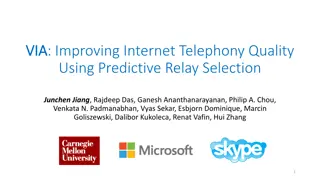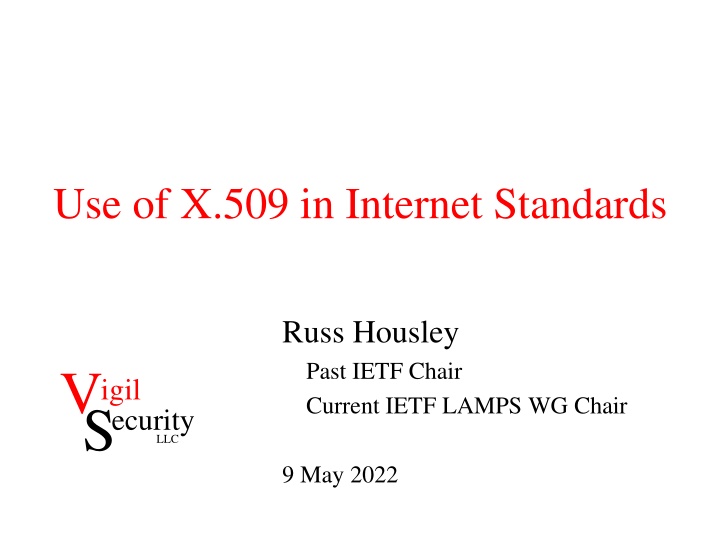
X.509 in Internet Standards and PKI Architectures
Explore the evolution of X.509 standards in Internet protocols, from v1 to v3, and delve into the architecture of Public Key Infrastructures (PKIs) as outlined by the IETF PKIX Working Group. Learn about the development and deployment of X.509 certificates and Certificate Revocation Lists (CRLs) in managing digital identities and security protocols.
Download Presentation

Please find below an Image/Link to download the presentation.
The content on the website is provided AS IS for your information and personal use only. It may not be sold, licensed, or shared on other websites without obtaining consent from the author. If you encounter any issues during the download, it is possible that the publisher has removed the file from their server.
You are allowed to download the files provided on this website for personal or commercial use, subject to the condition that they are used lawfully. All files are the property of their respective owners.
The content on the website is provided AS IS for your information and personal use only. It may not be sold, licensed, or shared on other websites without obtaining consent from the author.
E N D
Presentation Transcript
Use of X.509 in Internet Standards Russ Housley Past IETF Chair Current IETF LAMPS WG Chair Vigil Security LLC 9 May 2022
X.509: v1, v2, v3 CCITT X.509 (v1) published in Nov 1988 X.500 Directory Authentication Framework Privacy-Enhanced Mail (PEM) PKI [RFC1422] specification based on v1 in 1993; not deployed ITU-T X.509 (v2) published in Nov 1993 Adds two certificate fields for Directory access control I am unaware of any v2 implementations ITU-T X.509 (v3) published in Aug 1997 Adds the extensions field to certificate and CRL PKI using X.509 (PKIX) profile of v3 [RFC2459] in 1999; very widely deployed Vigil Security 2 LLC
IETF PKIX Working Group Chartered in Oct 1995 to develop Internet standards to support X.509-based Public Key Infrastructures (PKIs) Profiled X.509 standards developed by the CCITT / ITU-T Independent initiatives to address X.509-based PKI needs in the Internet Vigil Security 3 LLC
PKIX Architecture +---+ | C | +------------+ | e | <-------------------->| End entity | | r | Operational +------------+ | t | transactions ^ | | and management | Management | / | transactions | transactions | | | PKI users | C | v | R | -------------------+--+-----------+---------------- | L | ^ ^ | | | | PKI management | | v | entities | R | +------+ | | e | <---------------------| RA | <---+ | | p | Publish certificate +------+ | | | o | | | | s | | | | I | v v | t | +------------+ | o | <------------------------------| CA | | r | Publish certificate +------------+ | y | Publish CRL ^ | | | +---+ Management | transactions | v +------+ | CA | +------+ Certificates and CRLs are defined in X.509 Vigil Security 4 LLC
PKIX Architecture +---+ IETF PKIX specified protocols to use and manage certificates and CRLs | C | +------------+ | e | <-------------------->| End entity | | r | Operational +------------+ | t | transactions ^ | | and management | Management | / | transactions | transactions | | | PKI users | C | v | R | -------------------+--+-----------+---------------- | L | ^ ^ | | | | PKI management | | v | entities | R | +------+ | | e | <---------------------| RA | <---+ | | p | Publish certificate +------+ | | | o | | | | s | | | | I | v v | t | +------------+ | o | <------------------------------| CA | | r | Publish certificate +------------+ | y | Publish CRL ^ | | | +---+ Management | transactions | v +------+ | CA | +------+ Certificates and CRLs are defined in X.509 Vigil Security 5 LLC
Early PKIX Vision Initial view was four parts: 1. Certificate and CRL Profile [RFC2459] 2. Operational Protocols [RFC2559] [RFC2585] [RFC2587] 3. Certificate Management [RFC2510] [RFC2511] [RFC2797] 4. Certificate Policies [RFC2527] However, X.509 was very widely accepted, and the effort grew, and in some cases, more than one way to do the same thing became standards Vigil Security 6 LLC
PKIX: Oct 1995 to Oct 2013 PKIX WG published 70 RFCs: Certificate Profiles (PKC, Attribute, Qualified, Proxy, ) Operational Protocols Certificate Management (CMP, CMC, EST, ) Certificate Policies (CA, AA, TSA, ) Online Certificate Status Protocol (OCSP) Algorithm conventions (also proof-of-possession) Time-stamp protocol (TSP) Delegated of certification path construction and validation Trust Anchor Management Protocol (TAMP) Many certificate extensions and alternative name formats Informational specifications to aid implementers Vigil Security 7 LLC
LAMPS: Jul 2016 to present Limited Additional Mechanisms for PKIX and SMIME PKI-related RFCs: Updates and clarifications of PKIX RFCs Certification Authority Authorization (CAA) Additional algorithm conventions Additional certificate extensions Updates for Internationalization in names Major upcoming work item: Post-Quantum Cryptography (PQC) Vigil Security 8 LLC
Protocols using X.509 Certificates Many security protocols use X.509 certificates, including: TLS: Transport Layer Security IKE: Internet Key Exchange (IKEv1 and IKEv2) S/MIME: Secure Multipurpose Internet Mail Extensions JOSE: JSON Object Signing and Encryption COSE: CBOR Object Signing and Encryption Many application protocols run on top of TLS or IPsec. Thus, many applications indirectly depend upon X.509 certificates, especially the world wide web. Today, 1314 RFCs include X.509 or certificate Vigil Security 9 LLC
Thank you! Russ Housley housley@vigilsec.com +1 703 435 1775 Vigil Security LLC

